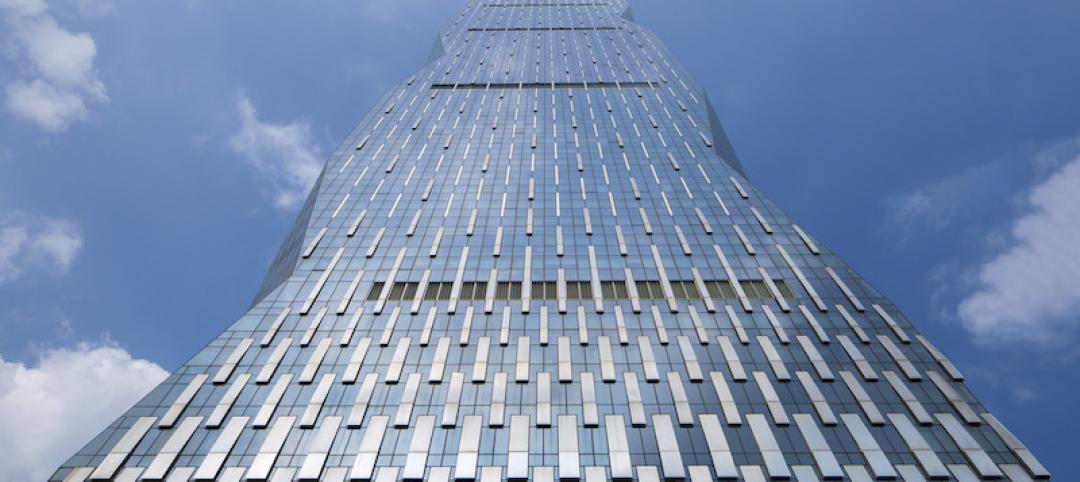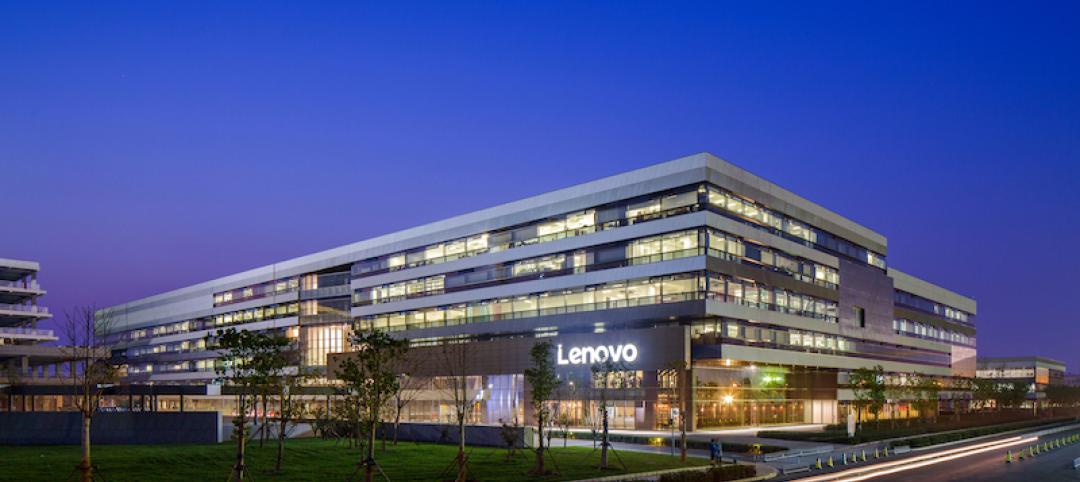The results of the 2011 Emporis Skyscraper Award are now in: 8 Spruce Street in New York City is the winner of the renowned architecture prize for new skyscrapers. Every year, Emporis' international jury (www.emporis.com) rewards ten skyscrapers completed in the previous calendar year. The award is being given for the 12th time.
The winners were chosen from over 220 skyscrapers completed in 2011. 8 Spruce Street, the first skyscraper by the architect Frank Gehry, and also known as The Beekman or New York by Gehry, won over the jury with its magnificent undulating stainless steel facade.
The sculptured form of Skidmore, Owings & Merrill's Al Hamra Tower earned it second place in the ranking. Despite its great height, the skyscraper fits harmoniously into Kuwait City's urban landscape. The tower is engineered to take account of climate conditions: the south facade, with limestone elements cladding a concrete wall, protects the building from the searing desert sun and impressed the jury from both architectural and functional points of view.
DBI Design's Etihad Towers were voted into third place, the jury praising the complex as a particularly harmonious ensemble of buildings. Critical to the decision were the soft, curving contours of the towers: these suggest the shape of sails and are intended to evoke Abu Dhabi's history as a port. The jury of experts also singled out the exceptional facade of silver and blue glass.
8 Spruce Street is now the third New York tower to win the Emporis Skyscraper Award. The very first award (2000) went to Sofitel New York Hotel, while Hearst Tower won the coveted architecture prize for 2006. That makes New York City, the world capital of high-rise architecture, the city to which the Emporis Skyscraper Award has most often been awarded.
Click here to view photos of the winning projects. +
Related Stories
Mixed-Use | Aug 16, 2016
Goettsch Partners completes mixed-use tower in R&F Yingkai Square
The 66-story building is now the 7th tallest completed building in Guangzhou.
| Aug 15, 2016
SPORTS FACILITY GIANTS: New and renovated college sports venues - designed to serve students and the community
Schools are renovating existing structures or building new sports facilities that can serve the student body and surrounding community.
| Aug 15, 2016
Top 50 Sports Facility Architecture Firms
Populous, HKS, and HOK top Building Design+Construction’s annual ranking of the nation’s largest sports facility sector architecture and A/E firms, as reported in the 2016 Giants 300 Report.
| Aug 15, 2016
MILITARY GIANTS: Cross-laminated timber construction gets a salute from the Army
By privatizing the construction, renovation, operation, maintenance, and ownership of its hotels the Army expects to cut a 20-year timetable for repairs and replacement of its lodging down to eight years.
| Aug 15, 2016
Top 30 Military Architecture Firms
HDR, Clark Nexsen, and Guernsey top Building Design+Construction’s annual ranking of the nation’s largest military sector architecture and A/E firms, as reported in the 2016 Giants 300 Report.
| Aug 12, 2016
SCIENCE + TECHNOLOGY GIANTS: Incubator model is reimagining research and lab design
Interdisciplinary interaction is a common theme among many new science and technology offices.
| Aug 12, 2016
Top 40 Science + Technology Architecture Firms
Perkins+Will, HDR, and HOK top Building Design+Construction’s annual ranking of the nation’s largest science + technology sector architecture and A/E firms, as reported in the 2016 Giants 300 Report.
| Aug 12, 2016
OFFICE GIANTS: Technology is giving office workers the chance to play musical chairs
Technology is redefining how offices function and is particularly salient in the growing trend of "hoteling" and "hot seating" or "free addressing."
| Aug 12, 2016
Top 100 Office Architecture Firms
Gensler, HOK, and Perkins+Will top Building Design+Construction’s annual ranking of the nation’s largest office sector architecture and A/E firms, as reported in the 2016 Giants 300 Report.
| Aug 11, 2016
RETAIL GIANTS: Retailers and developers mix it up to stay relevant with shoppers
Retail is becoming closely aligned with entertainment, and malls that can be repositioned as lifestyle centers will have enhanced value.
















